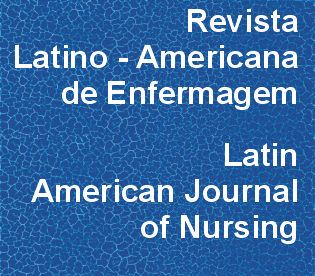Eventos adversos relacionados con el uso de catéteres venosos centrales en recién nacidos hospitalizados
DOI:
https://doi.org/10.1590/S0104-11692010000200009Palabras clave:
Recién Nacido, Cateterismo Venoso Central, Efectos AdversosResumen
El objetivo de este estudio fue identificar los eventos adversos relacionados con el uso de catéteres venosos centrales (CVC), en recién nacidos internados en una unidad neonatal. Se trata de investigación cuantitativa, descriptiva, retrospectiva. La población fue constituida por 167 neonatos internados en la unidad neonatal del Hospital de Clínicas de Porto Alegre que utilizaron CVCs, inseridos por punción percutánea (PICC) e inserción quirúrgica, totalizando 241 catéteres. En los PICCs hubo mayor incidencia de eventos adversos mecánicos, predominando la oclusión (19,44%) y la ruptura del catéter (8,8%). Los CVCs por inserción quirúrgica presentaron la mayor incidencia de los eventos adversos infecciosos relacionados al catéter, siendo el más frecuente la sepsis clínica (16%). El estudio sugiere que, para mayor seguridad del uso de CVCs, es importante que sea utilizada la técnica correcta de inserción del catéter y realizado el acompañamiento de los CVCs por un equipo especializado y atento a la prevención de eventos adversos.Descargas
Los datos de descarga aún no están disponibles.
Descargas
Publicado
2010-04-01
Número
Sección
Artículos Originales
Licencia
Los derechos de autor son propiedad exclusiva de la Revista Latino-Americana de Enfermagem (RLAE), transferidos a través de la Declaración de Transferencia de Derechos de autor (que está en el formulario individual de declaración) firmada por los autores. Para el uso de artículos, RLAE adopta la Licencia Creative Commons CC BY-NC atribución no comercial (abstracto o código completo de licencia). Con esta licencia es permitido acceder, descargar (download), copiar, imprimir, compartir, reutilizar y distribuir los artículos, desde que para uso no comercial y con citación de la fuente, dando los créditos de autor a la Revista Latino-Americana de Enfermagem. En tales casos, no se necesita permiso de los autores o editores.Cómo citar
Franceschi, A. T., & Cunha, M. L. C. da. (2010). Eventos adversos relacionados con el uso de catéteres venosos centrales en recién nacidos hospitalizados . Revista Latino-Americana De Enfermagem, 18(2), 196-202. https://doi.org/10.1590/S0104-11692010000200009



